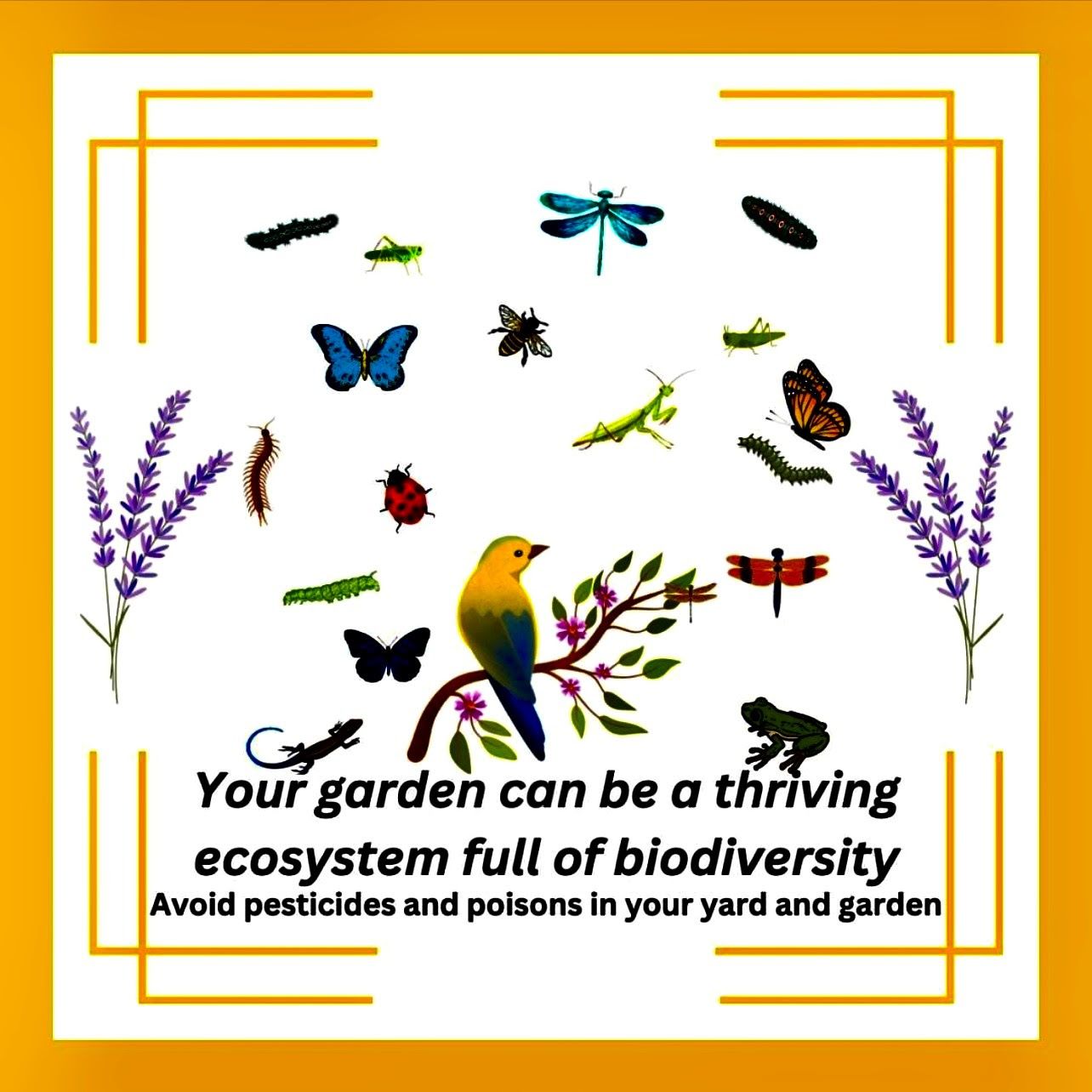Newsletter Spring 2024

No Mow, No Water, No Weed, No Chemical Yard
- Melissa A. Wilson
Turfgrass in our lawns such as Kentucky Bluegrass or tall fescue rose to prominence because they tolerate mowing, fertilization and heavy usage. Of course, few enjoy the weekly mowing, fertilizers can be toxic to waterways and pesticides and fungicides kill everything even the bees and the butterflies plus the birds that eat them. We surround where we live with these commonly used poisons. Most yards are merely “decorative” and the very small amount of foot traffic doesn't justify maintaining a thick green but lifeless lawn with all the chemicals and excessive water use. Accordingly, more and more people are eager to convert their lawn to native pollinator plants primarily wildflowers and small woody landscaping. These native plantings can replace entire lawns or dedicated garden beds. Native plants reintroduce local species back into suburban areas. They provide a great introduction to our natural heritage as well as a proving ground for restoration of natural plant communities in a larger scale. And the variety and blooms are eye-catchingly beautiful. Consult the Kentucky Native Plant Society at https://www.knps.org How To Convert Lawns Into Native Plantings, December 10th, 2022. This article lays out steps to change your sterile costly lawn to a beautiful pollinator garden with low maintenance.
Grass lawns are sterile in that they support almost no biodiversity. Our lawns that are treated with fungicides and fertilizers of course cannot sustain native plants. We have come to value an empty false green expanse where no insects can live. Manicured and chemically maintained yards are a mirage of bright green disguising a wasteland. By contrast a diverse patch of native pollinators provides a foundation for a complex food web with a wide variety of pollinators, herbivores and predators. In contrast to grass, native plants make biodiversity possible because they are the foundation of food webs where plants are consumed by bugs which then are eaten by bigger animals in turn passing nutrition and energy up the food chain. We need our bees!
Meticulously manicured lawns sprayed by professional weed exterminators with a harsh chemical diet are one of the greatest single threats to habitat loss in our cities. In addition to being a biological dead space turfgrass is a massive resource sinkhole. The amount of energy in mowing, the gallons of water, and the chemicals cannot justify the look that has become popular in our neighborhoods. Our yards have the potential to be the biggest spaces for reviving healthy surroundings. Even a plot 6 by 6 of native flowers can attract and feed a wide range of native pollinators such as bees, butterflies, hummingbirds and other insects. And no toxins! When native pollinators are planted densely together in about two years the growth will leave little room for weeds and then watering will rarely be required. Please consider making your small patch of earth a part of a healthy thriving alive and functioning ecosystem. https://www.lawntowildflowers.org Bringing Your Lawn Back To Life, January 29 2021.
Backyard Conservation Program
Participate in Fayette County's Backyard Conservation Program to get reimbursed up to $200 for establishing, enhancing, restoring, and/or maintaining a backyard conservation project. Applications open April 1st. Learn more here!
.
Get Ready For SPRING!
- Hope Cottrill
As we happily look towards warmer weather, it’s a great time to get the garden ready for spring blossoms. We’re in hardiness Zone 7 and, although we know to avoid a frost you plant outside after Derby Day, there are some things we can do to prepare for the days ahead.
This is the time to perform a little maintenance on your gardening tools. Consider cleaning and sharpening your tools. This is a great time to get your lawn mower and edger maintenance up to date and the blades sharpened.
The longer days will stimulate your house plants as well, so some TLC for your indoor plants will be due. Fertilize, and replant if needed, all your indoor green friends as the sun sets get later. This is also a great time to get any dust off your household plants.
Although it may be tempting on an occasional nice day, consider waiting to clean up your garden debris until temperatures are in the 50s for a week. The leaves allow tiny creatures including pollinators that live through the winter in your yard debris, old plant growth as well as the leaves to have protection from the cold temperatures. All can then safely emerge for a chance to be part of a healthy ecosystem in your yard throughout the warm seasons. In addition, nutrients from the leaves are releasing during this time and a little delay will reduce the need for fertilizers in the warmer months. A light blanket of leaves will not kill your grass as some fear.
There is also some concern with overworking the soil. I have to admit that I occasionally do try to get a head start on the readily exposed weeds but be warned! Sometimes, I enthusiastically over garden and destroy perennials in the process as they are waiting to emerge. I have found that leaving plant tags helps me keep in mind all the plants in the garden waiting to raise their heads.
Of course, there is always the question of when to prune your hydrangeas:
Blooms on old wood (blooms from on the stems from the previous summer), prune in fall;
Blooms on new wood (blooms form on new growth in the current growing season), prune in spring.
Prune at a 45 degree angles above a bud. For more detailed information, visit Monrovia’s web site @ https://www.monrovia.com/be-inspired/when-to-prune-hydrangeas.html.
Happy Gardening!
Wanda Jaquith, Our Neighbor for Fifty Years
- Interviewed by Melissa A. Wilson
One Saturday in 1973, Wanda was driving through the neighborhood from her apartment on Fincastle and saw a “For Sale” sign posted on a tree in the yard of 252 South Hanover and soon excitedly purchased this house. This same year, Sheila and Jim Evans moved into their South Hanover home a block up the street. At that time, Bill and Mary Montague considered themselves the older residents of the neighborhood and Mary still lives in her stately white brick home across South Hanover.
Living on South Hanover Wanda, an English teacher and her late husband David, a pharmacist, quickly became fast friends with nearby neighbors. During the seventies, she fondly recalls porch gatherings at the home of Ruth and her husband Ed Parker, former Spindletop farm manager, along with nearby neighbors John, a musician and Carol Ireson, who has a doctorate in nursing. Sherry was a frequent drink of choice at 5:00 pm porch happy hour.
When Wanda and David moved onto South Hanover where the Chevy Chase Plaza now stands there was a Waffle House type late night eatery and a small grocery store. Across Euclid Avenue, Farmer’s Jewelry had been established 20 years earlier in 1950 and the Chevy Chase Inn was started in 1933. But Oram Flowers started in Lexington in 1877! Nearby, also on Euclid, was Candioto’s, supposedly a piano store but the inventory never changed and it was rumored it was a betting parlor. Other stories of more colorful neighbors cannot be printed!
During the 60’s, Lexington Mayor Fred Fugazzi’s home was at the corner of South Hanover and Ghent saw a few gatherings of those protesting the Mayor’s stance on the civil rights movement. Liz Mims, also down the street, owned the much-missed Saratoga restaurant. Edsel and Nancy Rawlings lived two doors up from Wanda and David, where Edsel continued to live as a widower until his death last year. His lovely daughter, Molly, who grew up in this house, and her husband now reside there with Edsel’s big black friendly dog.
David Burg of South Ashland was one of the founders of Ashland Park Neighborhood Association. David was an active member up until his recent death. APNA has chosen to remain separate from the Ashland Neighborhood Association as the pressures from the adjacent Chevy Chase business district create unique issues for APNA. Over time, APNA has succeeded in preventing Chevy Chase Plaza from becoming a 15-story high-rise as originally planned, shutting down a bar on Euclid with out-of-control patrons partying in the streets late into the night, and passing historic overlay zoning--all with enormous support from neighbors. Over the years many trees have been planted by APNA to replace those planted when the neighborhood formed.
In 1990, Wanda and David bought 250 South Hanover, the house next door to the house they originally owned, from Buddy Rose and his family. Just last year she moved into Hanover Towers but is staying involved in the neighborhood. Wanda, a very active member of the Board of the Ashland Park Neighborhood Association over the years, has recently rejoined the Board. Her detailed knowledge of our history and our mission is invaluable. And, if anyone needs a special serving piece for a dinner party or a holiday decoration, Wanda is your go-to girl!
Short Term Rental Update from Councilmember Liz Sheehan
Because I know that you are very interested in short-term rental policy, I wanted to make you aware of this bill that was filed last week at the state level: https://apps.legislature.ky.gov/record/24rs/sb234.html
If passed, it will greatly restrict what we are able to do at the local level.
Stay tuned for more information regarding a neighborhood meeting to discuss the Urban Growth Management ZOTAs.
Pets of APNA
Kelly and Bryan Mullins on South Ashland stroll through the neighborhood on a warm and sunny Sunday afternoon with their two dogs. Martha is a six year old shy “Heinz 57 Variety“ Chihuahua and Terrier. Mike The Trike is a courageous 12 year old “Heinz Variety 57“ Terrier mix.
Neighborly Reminder to Bag the Doo: Scoop the Poop!
- Melissa A. Wilson
Don't we love our dogs! Most certainly the vast majority of us in APN are responsible pet owners and pick up our dog’s waste and carry it back to our own Herbie Curbie. Pet waste is more than a smelly unsightly nuisance on our neighbor’s lawn or left behind in our own yard. It is also a pollutant washed to our waterways by rain runoff. In fact, urban area pet waste and lawn fertilizers are at the top of contaminants in our storm water. Pet waste can contain harmful bacteria such as Giardia and Enterococcus that when exchanged with humans can result in resistance to antibiotics in humans. htps://www.ncbi.nlm.nih.gov Environmental Contamination By Dog Feces Dec 2012. If you think picking up dog poop is unpleasant, try swimming in it. Poor water quality in our streams and rivers means higher concentrations of water treatment chemicals and increased costs. If you don’t want to “Scoop the Poop” then better not use the water from your tap.
Think about this: there are approximately 0.6 dogs for every US household and in a community the size of Fayette County this would be around 70,000 dogs. The EPA estimates that each dog produces 275 pounds of waste every year or over 19,000,000 pounds of dog waste per year here in Lexington. Kentucky Cooperative Extension Service, Martin-Gatton College of Agriculture, Food and Environment; American Veterinary Medical Association. If just one of our neighbors and any of those who stroll through our neighborhood on a dog walk are not disposing of poop properly they are creating a problem for all of us whether we have a dog or not. While this is preaching to the choir “DOO” the right thing and pick up after your dog. If you see someone walk away from their dog’s poo and if you are bold and polite and gentle you could always offer to provide them a plastic bag to SCOOP THE POOP!
GO CATS!!!
Save the Date! APNA Spring Walkabout
Thursday, April 11th
5:45 PM
After we visit a Chevy Chase business, we will gather at The Beer Trappe for dinner (and beer).
**Dinner will be ordered from Bear and The Butcher**
We hope you'll join us!
APNA 2024 Membership Drive
By now you should've received a membership form if you haven't paid this year's dues (if you have paid already, please disregard).
Please consider joining/renewing to support APNA's efforts!
Annual Member: $25
Lifetime Member: $500
Non-Resident Owner: $125
* Over 150 trees planted * Landscaping *Historic signage *New benches
* Seasonal parties * Annual fall picnic * Holiday gathering *Pop Ups
* Newsletters * Community engagement * City planning
All Rights Reserved | Ashland Park Neighborhood Association



